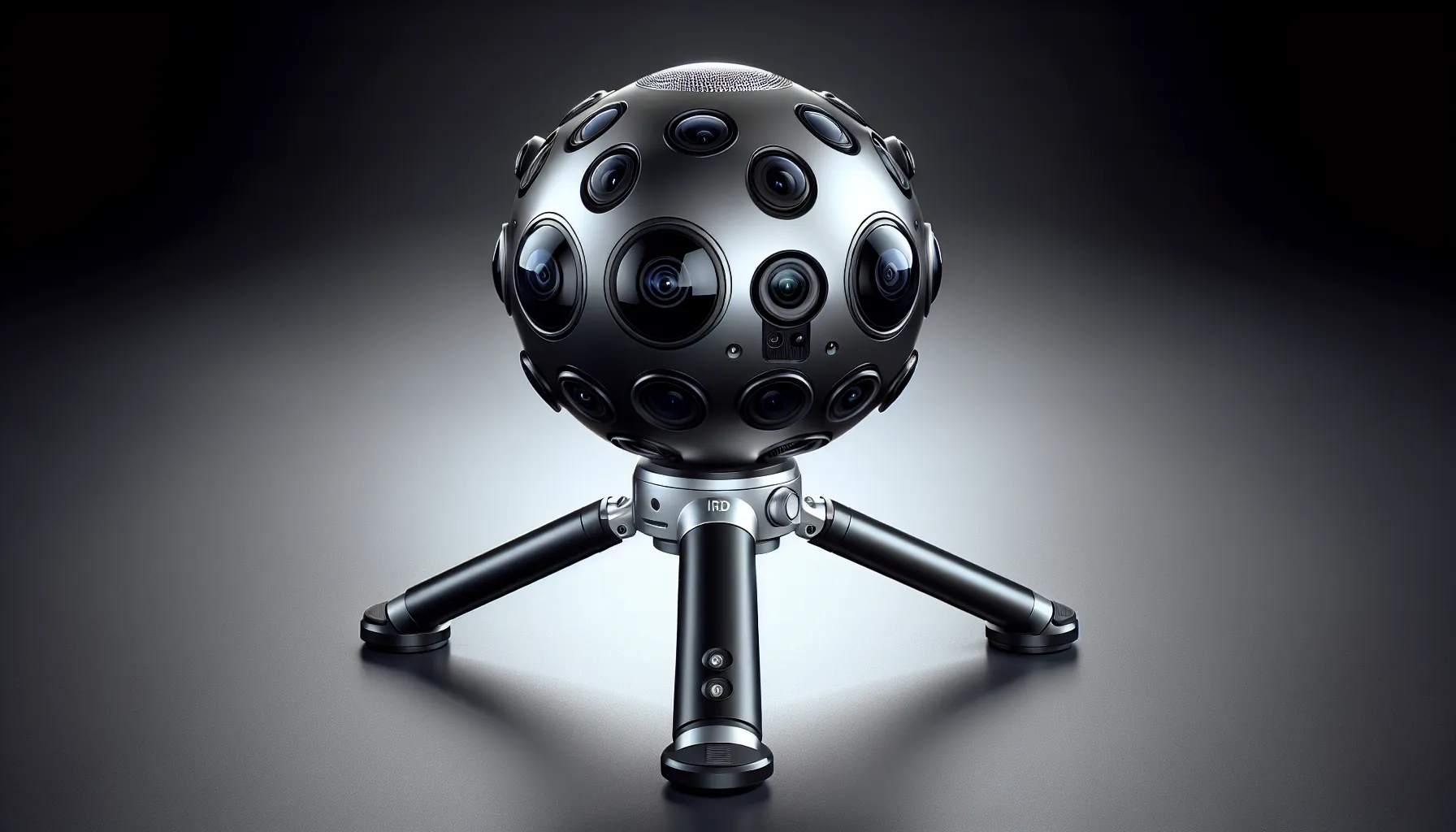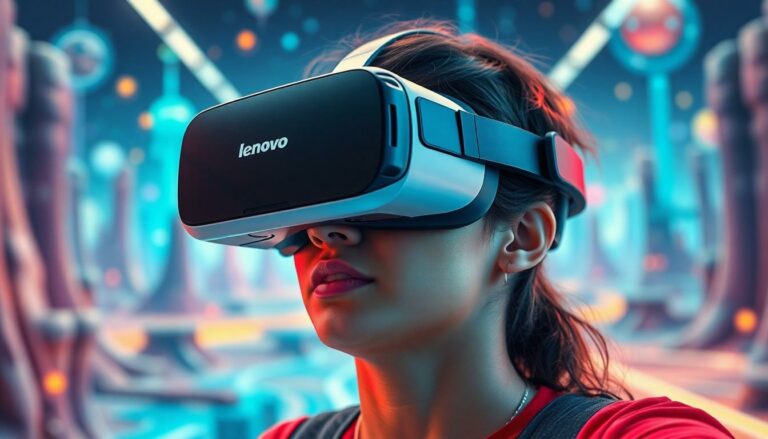Table of Contents
ToggleImagine stepping into a world where reality takes a backseat and your wildest dreams come to life. Enter the realm of VR cams, where capturing moments becomes an exhilarating adventure. These nifty gadgets aren’t just for tech enthusiasts; they’re for anyone ready to elevate their photography game and make their friends wonder if they’ve entered a sci-fi movie.
With a VR cam in hand, every snapshot transforms into an immersive experience. Whether it’s a family gathering or a solo hike, these cameras allow users to relive memories in stunning 360 degrees. Plus, who wouldn’t want to impress their social media followers with jaw-dropping content that makes them feel like they’re right there in the action? Get ready to explore how VR cams can turn the mundane into the extraordinary, one frame at a time.
Overview of VR Cam Technology
VR cam technology captures images and videos in a full 360-degree format, creating immersive experiences. Users interact with their surroundings through these cameras, transforming how content is perceived. Enhanced sensors and lenses allow for high-resolution imagery, making every frame visually stunning.
These devices come in various forms, including handheld models, mounts for drones, and professional rigs. Their versatility makes them suitable for multiple applications, such as real estate tours, live events, and virtual travel experiences. The ability to capture panoramic scenes changes how stories are told and shared.
Users benefit from built-in stabilization features that reduce camera shake, ensuring smooth footage. Many offer live streaming capabilities, connecting audiences in real-time to experiences happening around the world. Software support plays a crucial role, with editing tools simplifying the creation of professional-quality content.
Adoption of VR cam technology spans various sectors, including entertainment and education. In marketing, brands leverage these cameras to showcase products in unique ways, enhancing consumer engagement. Virtual reality applications extend further into training simulations, where immersive visualizations facilitate learning.
As the technology continuously evolves, improved connectivity options emerge, enabling seamless integration with smartphones and computers. Enhanced battery life allows for extended shooting sessions, catering to the demands of content creators. The rise of social media platforms encourages sharing of VR content, broadening its appeal to a wider audience.
This innovative technology brings realism to storytelling, making experiences more engaging and memorable.
Features of VR Cams
VR cams offer a variety of features that enhance content creation. Users benefit from advanced technology that transforms photography into immersive experiences.
Key Specifications
High-resolution sensors allow for sharp images and videos. A wide field of view captures expansive scenes, and many models support 4K video recording for crystal-clear playback. Built-in stabilization features minimize shakiness in footage, resulting in professional-looking content. Connectivity options include Wi-Fi and Bluetooth for easy file transfers and live streaming capabilities. Some VR cams come with waterproof housings, making them suitable for outdoor adventures. Battery life varies but typically lasts between one to three hours, depending on usage.
User Experience
Simplicity in operation caters to all skill levels. Intuitive controls help users navigate settings without confusion, enhancing the overall experience. Live streaming features connect users with audiences in real-time, engaging viewers in unique ways. Many VR cams include companion apps for editing and sharing content, streamlining the creation process. Lightweight designs make carrying and mounting convenient, promoting versatility in diverse environments. Users enjoy the ability to share immersive experiences instantly on social media, increasing the reach of their content.
Top VR Cams on the Market
The market offers various VR cameras, catering to diverse needs for content creators. Here are three notable options.
VR Cam A Review
VR Cam A excels with its 360-degree recording capabilities. Users benefit from dual 4K sensors, which deliver stunning image quality. Built-in stabilization ensures smooth videos, even in motion. Its compact design allows for easy portability. Additionally, the camera supports live streaming, making it perfect for real-time engagement. Battery life lasts approximately two hours, suitable for casual shooting sessions. Users appreciate the intuitive app for quick editing and sharing.
VR Cam B Review
VR Cam B stands out with its user-friendly interface. This model captures images in 5.7K resolution, providing exceptional clarity. It features a 180-degree field of view, offering immersive experiences. Dual lenses enhance depth perception, allowing for dynamic storytelling. With waterproof housing, it’s ideal for adventurous shoots. Users can connect via Wi-Fi for seamless file transfers. Battery life extends to three hours, making it ideal for longer events.
VR Cam C Review
VR Cam C offers robust features at an affordable price. The compact size makes it highly portable, suitable for on-the-go shooting. Users enjoy a wide field of view, which enhances the immersive quality of recordings. It supports 4K resolution and has built-in stabilizers for smooth footage. This model also includes multiple connectivity options, like Bluetooth and NFC, for easy sharing. Battery performance lasts about two hours, meeting the demands of most content creators.
Use Cases for VR Cams
VR cameras offer diverse applications across various fields. These innovative devices elevate experiences, providing users with immersive environments and enhanced storytelling.
Gaming
Gaming benefits significantly from VR cam technology. Gamers capture their gameplay in real-time, allowing viewers to experience the action as if they were present. Many VR platforms support streaming content from these cameras, creating an engaging viewer experience. Players can showcase their skills, strategies, or even commentary while immersing audiences. Gamers use VR cams to create tutorials, highlights, and walkthroughs, further enriching the gaming community. Several game titles are optimized for VR content, encouraging users to share their unique experiences. Enhanced interaction and processed data make VR gaming more appealing than traditional setups.
Virtual Tours
Virtual tours utilize VR cameras to transform how individuals explore spaces. Real estate agents create immersive home walkthroughs, allowing potential buyers to visualize properties without physical visits. Museums and historical sites adopt VR cams to offer guided tours, making art and culture accessible from anywhere. Travelers use these cameras to document experiences, capturing destinations in stunning detail. Many businesses leverage virtual tours to engage clients effectively, enhancing marketing strategies and viewer interest. Organizations benefit from showcasing venues, boosting attendance for events or exhibitions. Overall, virtual tours provide insightful experiences for users seeking discovery and innovation.
Educational Purposes
Educational institutions increasingly integrate VR cameras into their curriculums. These devices facilitate immersive learning experiences that enhance student engagement. Students can explore complex concepts through interactive simulations, making learning more enjoyable. Teachers produce educational content that reaches diverse learning styles, aiding comprehension and retention. Various subjects, such as history and science, benefit from VR technology, promoting exploration beyond traditional materials. Many educational programs adopt VR cams to create virtual field trips, taking students around the globe without leaving the classroom. Overall, education enhances through innovative applications of VR cameras, preparing learners for a technology-driven future.
VR cameras are revolutionizing the way content is created and shared. Their ability to capture immersive 360-degree experiences makes them invaluable for both casual users and professionals alike. As technology advances, these cameras continue to evolve, offering enhanced features that cater to a wide range of applications.
From real estate tours to educational simulations, VR cams are becoming essential tools for storytelling and engagement. The increasing popularity of social media platforms further amplifies their reach, allowing creators to connect with audiences in innovative ways. Embracing VR camera technology opens up a world of possibilities for anyone looking to elevate their content and engage viewers like never before.






